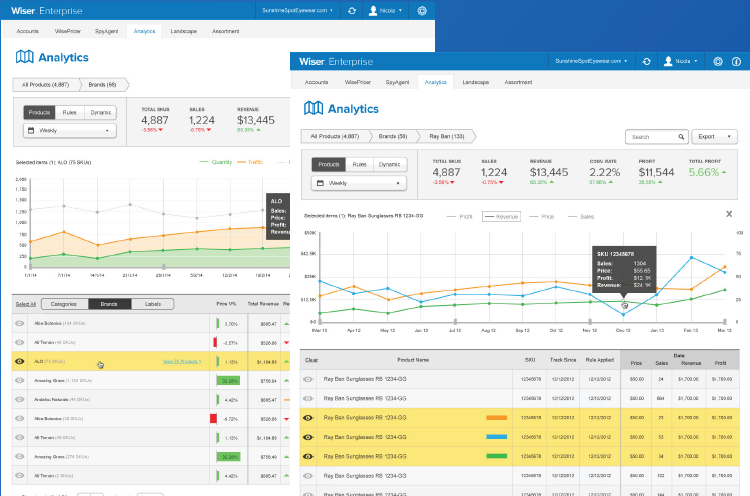
Robust Price Monitoring Software is the Best Bet for Online Retailers to want Sustainable Profitability

It can be very useful for a company to keep track of the prices of competitors and to do some adjustments. In the retail industry, in particular, pricing plays a very important role in achieving success. It is enough to ensure the quality of products being offered and to deliver customer service that impresses. Retailers have to realize that buyers nowadays are becoming more practical as they value cost-efficiency. For similar products with virtually the same quality, in most cases, buyers tend to choose the seller that offers the lower price regardless of the packaging, the brand name, or the level of customer service accorded. It's easy for customers to switch suppliers or for regular customers to go to a new store if they are offered better prices.
But how does robust price monitoring, as posited on this article's title, play a role in ensuring sustainable profitability? The following points would explain the idea:
Quick and Optimized Price Adjustments
If you want to be able to quickly react to price changes, you need to know the prices being offered by other retailers. Raising or lowering prices is all about the timing. You would want to lower prices when it makes the most impact or increase them when they are least likely to be noticed. For example, once product costs increase, you should not want to be the first to raise your selling prices. As much as possible, you have to be the last to implement increases. The short time when customers see your store having the lower prices will create a great good impression for most customers. If you are one of the first to raise prices, even your regular customers would consider going to another store. That's why it's very important to be able to have a dependable way of tracking prices. It helps having a robust price monitoring software.
Setting Prices for the Discount Season
It's a common practice for many stores to discreetly increase prices in preparation for the discount or sale season. This may sound unscrupulous but it is regularly being done by many establishments. The changes are not easily noticed because they are carefully studied and implemented. You can do something similar without necessarily feeling guilty about it. It is not a form of deception, you are simply trying to adjust prices to maximize profits. In the process, you will be lowering prices for some while increasing it for others so you are simply balancing things to raise profits. This is not about shamelessly replacing your price tags with higher prices weeks before the Holiday sale season. This is more on determining which products can make use of the discounts and which ones are fine with their current price levels or could still be possibly given a price increase.

Using Price Differences for Marketing
Sometimes, it helps being able to present how lower your prices are compared to those of competitors. If you have a reliable way of monitoring competitors' prices and you are satisfied enough in the amount of markup you set for your products, you can present tables or schedules that detail the price advantages for customers in choosing your store. You can't rely on this kind of strategy in the long term but you can occasionally use it at opportune moments. For instance, if many of your competitors are affected by stocking issues and are setting quite high prices for certain items, their low inventory levels are unlikely going to allow them to lower product prices. This would be a good time to slightly adjust your prices to show that you can offer something better.
On the other hand, it is also possible to raise prices to increase sales. This may sound illogical but there are some cases when buyers gauge product quality based on the prices. For them, higher prices could mean higher quality. You can exploit this phenomenon by searching for products that don't have many competitors and setting higher markups on them after doing a price research, after ascertaining that customers tend to not care about their prices, and after observing how other retailers don't dynamically react to prices changes on these products.
It makes sense to not make low prices as the centerpiece of a retailer's marketing strategy. However, the need to adjust prices is inevitable especially when selling products that are in high demand. If you need a tool to make it easy to monitor prices, you can use something like Wiser. This price monitoring solution comprehensively tracks prices for a specific product across marketplaces. In fact, dynamic pricing solutions not only monitor competition but is great for keeping your business' profits in check as it takes all aspects of your into account.

Screenshot of Wiser's Dynamic Pricing Solution
When you are updated with prevailing prices, you can plan your pricing strategy not to engage in price wars but to come up with price adjustments that can attract potential customers, keep your current customers, and ensure that changes in your prices wouldn't lead to any negative consequence on how customers perceive your store's pricing schemes.















